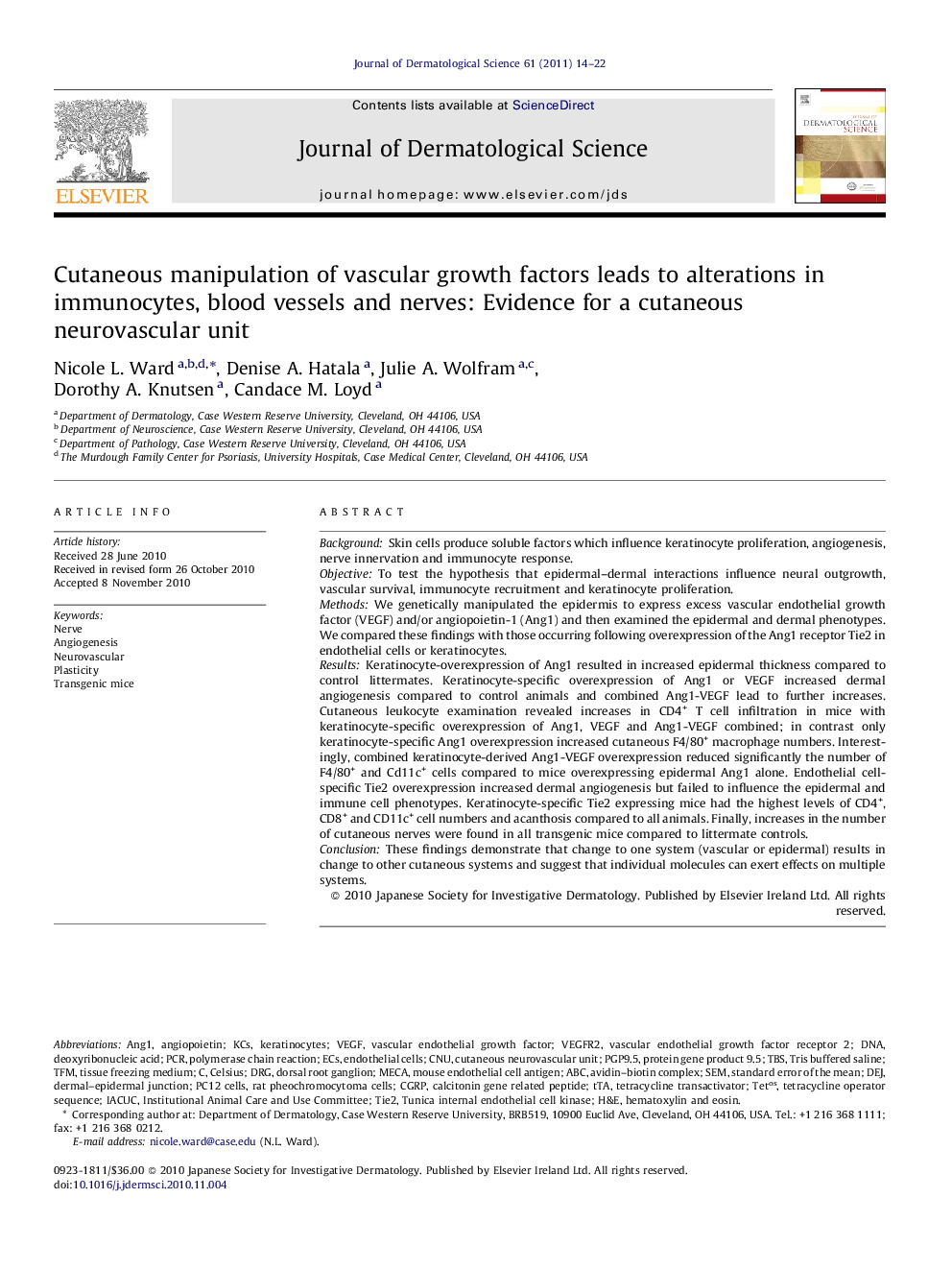| کد مقاله | کد نشریه | سال انتشار | مقاله انگلیسی | نسخه تمام متن |
|---|---|---|---|---|
| 3213620 | 1203243 | 2011 | 9 صفحه PDF | دانلود رایگان |

BackgroundSkin cells produce soluble factors which influence keratinocyte proliferation, angiogenesis, nerve innervation and immunocyte response.ObjectiveTo test the hypothesis that epidermal–dermal interactions influence neural outgrowth, vascular survival, immunocyte recruitment and keratinocyte proliferation.MethodsWe genetically manipulated the epidermis to express excess vascular endothelial growth factor (VEGF) and/or angiopoietin-1 (Ang1) and then examined the epidermal and dermal phenotypes. We compared these findings with those occurring following overexpression of the Ang1 receptor Tie2 in endothelial cells or keratinocytes.ResultsKeratinocyte-overexpression of Ang1 resulted in increased epidermal thickness compared to control littermates. Keratinocyte-specific overexpression of Ang1 or VEGF increased dermal angiogenesis compared to control animals and combined Ang1-VEGF lead to further increases. Cutaneous leukocyte examination revealed increases in CD4+ T cell infiltration in mice with keratinocyte-specific overexpression of Ang1, VEGF and Ang1-VEGF combined; in contrast only keratinocyte-specific Ang1 overexpression increased cutaneous F4/80+ macrophage numbers. Interestingly, combined keratinocyte-derived Ang1-VEGF overexpression reduced significantly the number of F4/80+ and Cd11c+ cells compared to mice overexpressing epidermal Ang1 alone. Endothelial cell-specific Tie2 overexpression increased dermal angiogenesis but failed to influence the epidermal and immune cell phenotypes. Keratinocyte-specific Tie2 expressing mice had the highest levels of CD4+, CD8+ and CD11c+ cell numbers and acanthosis compared to all animals. Finally, increases in the number of cutaneous nerves were found in all transgenic mice compared to littermate controls.ConclusionThese findings demonstrate that change to one system (vascular or epidermal) results in change to other cutaneous systems and suggest that individual molecules can exert effects on multiple systems.
Journal: Journal of Dermatological Science - Volume 61, Issue 1, January 2011, Pages 14–22